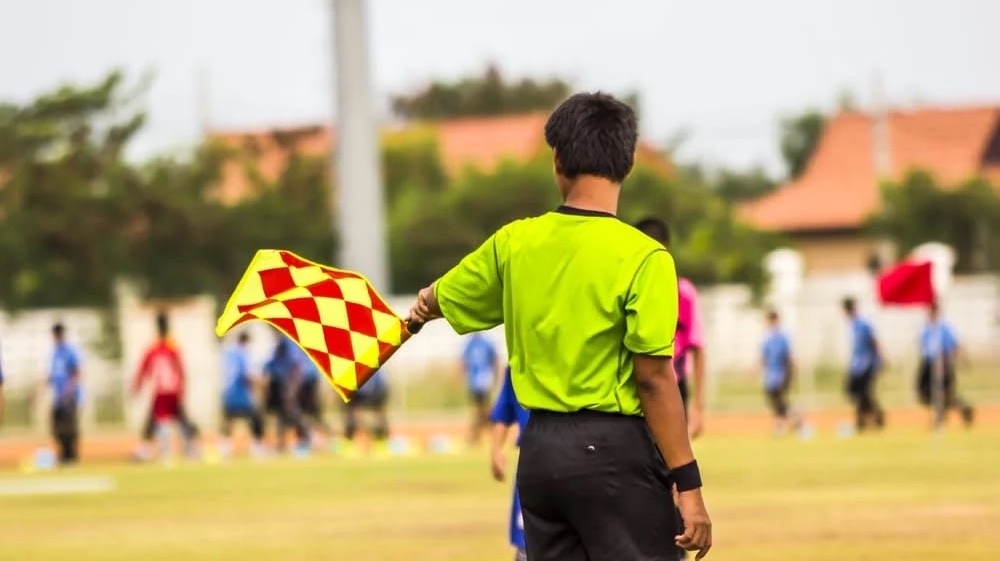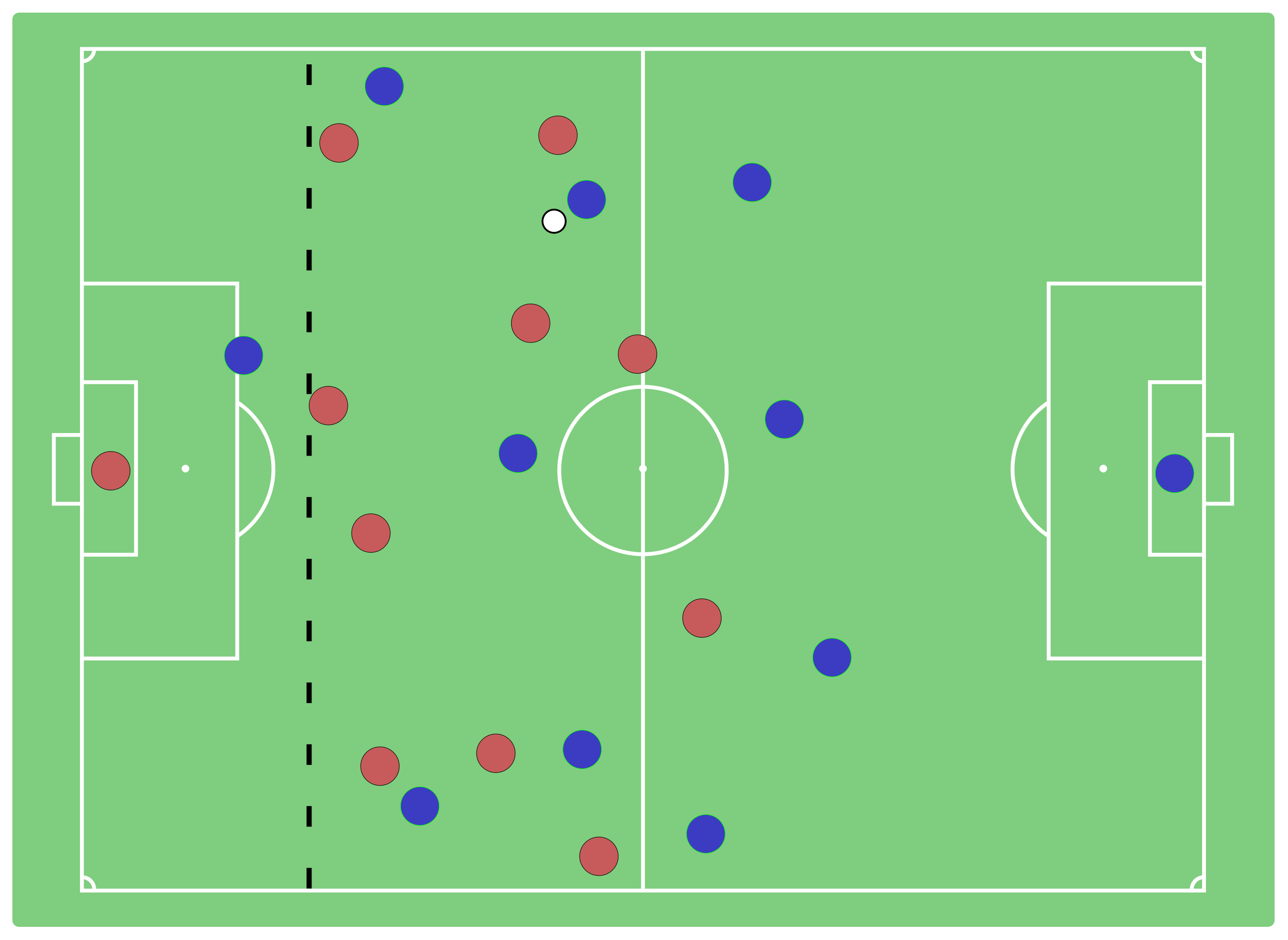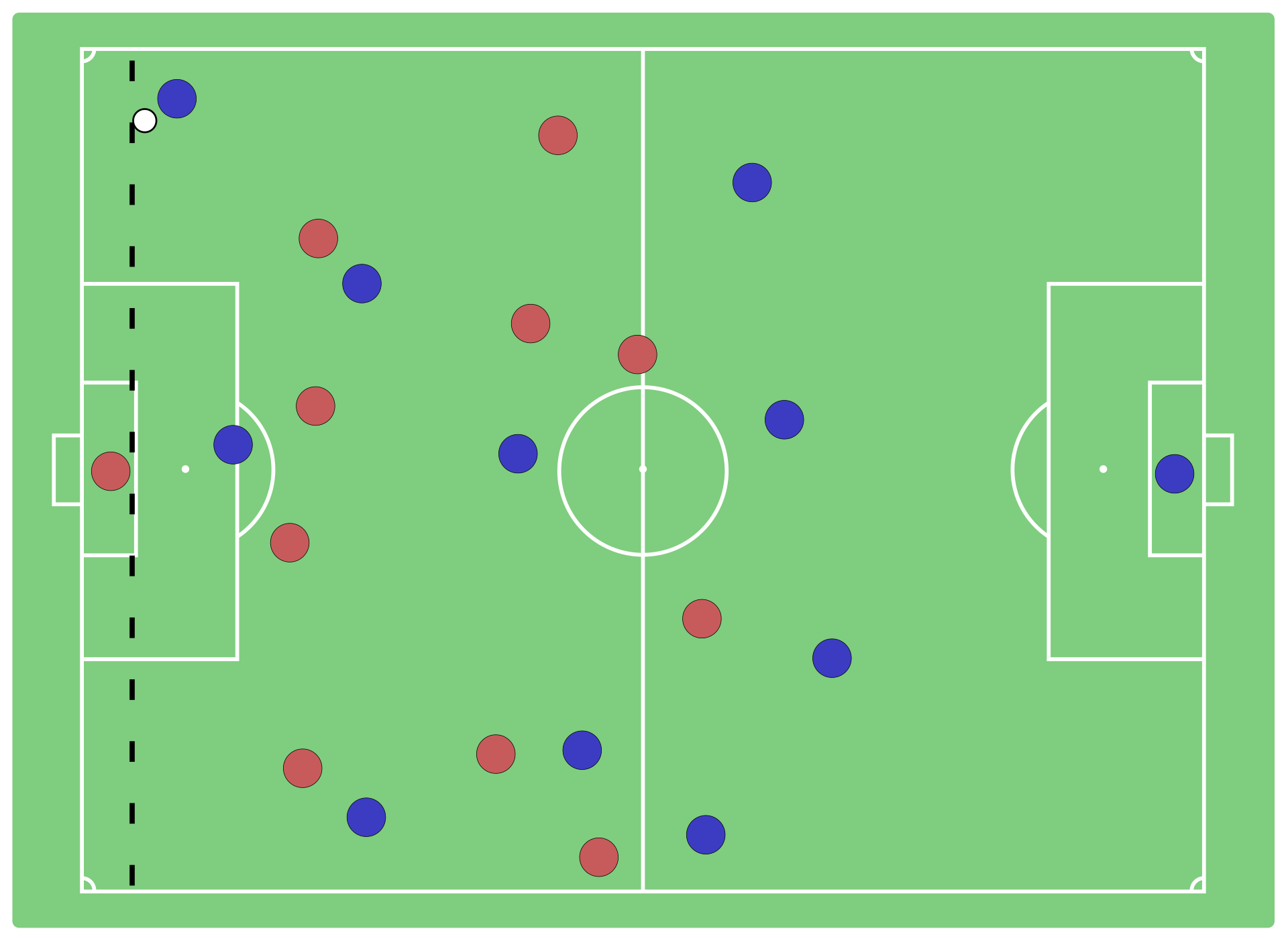In soccer, the offside rule is one of the most misunderstood aspects of the game. Many youth soccer parents go the entirety of their child’s career without fully understanding the rule, making frustration and confusion on the sidelines all too common when the referee’s flag goes up.
The offside rule (Law 11 in IFAB’s Laws of the Game) is designed to prevent players from unfairly gaining an advantage by hanging around the opponent’s goal. The rule is based on the idea that players should not be allowed to score a goal by being in a position on the field where they are closer to the opponent’s goal line than both the ball and the second-to-last opponent (usually the last defender).
Overall, the offside rule is designed to prevent players from unfairly gaining an advantage by lurking around the opponent’s goal and it is meant to encourage more open, attacking play.
How the Offside Rule Works
✅ A player is in an offside position if they are closer to the opponent’s goal line than both the ball and the second-to-last opponent (usually the last defender).
✅ A player cannot be called offside if they are in their own half of the field or if they are level with the second-to-last opponent (the last defender).
✅ If a player in an offside position is involved in active play (e.g. they receive a pass or they interfere with the play), they will be called offside and the play will be stopped.
✅ If a player in an offside position is not involved in active play (e.g. they are not near the ball and they are not blocking the opponents’ view of the ball), they will not be called offside and the play will continue.
Common Misconceptions About the Offside Rule
There are several common misconceptions about the offside rule in soccer. Here are a few:
❌ Misconception #1 – Offside means being in an offside position: One common misconception is that a player is offside if they are simply in an offside position. In reality, a player is only offside if they are in an offside position AND involved in active play by either interfering with play, interfering with an opponent, or gaining an advantage from being in that position.
❌ Misconception #2 – The ball has to be played forward for it to be offside: Another common misconception is that the ball must be played forward for an offside offense to occur. This is not true. The offside rule applies regardless of the direction in which the ball is played.
❌ Misconception #3 – The last defender can be anywhere on the field: Some people believe that the last defender can be any player on the field, but in fact, the last defender is the player who is closest to their own goal line. This means that a goalkeeper can be the last defender, even if they are outside the penalty area.
❌ Misconception #5 – The offside rule is subjective: While it is true that some offside decisions can be difficult to make, the offside rule itself is not subjective. The rule is clearly defined in the Laws of the Game, and it is up to the referee and assistant referees to make a decision based on the specific circumstances of each situation.
For more on the offside rule, watch the video and view the diagrams below.
The blue forward on the left of the diagram is in an offside position as they are ahead of both the ball and the second-last opponent (marked by the dotted line) in the opponents’ half of the pitch. This does not necessarily mean they are committing an offside offense. It becomes an offense only if the ball is played or touched by a teammate while the player is in an offside position and subsequently becomes involved in active play according to the definitions given in the Laws of the Game no matter if any of these events occur after they move to an onside position.
The blue forward in the penalty area of the diagram is not in an offside position, as they are behind the ball, despite the fact that they are closer to the opponents’ goal line than the second-last opponent.










